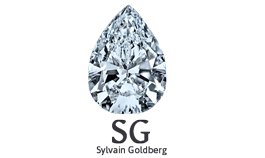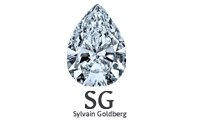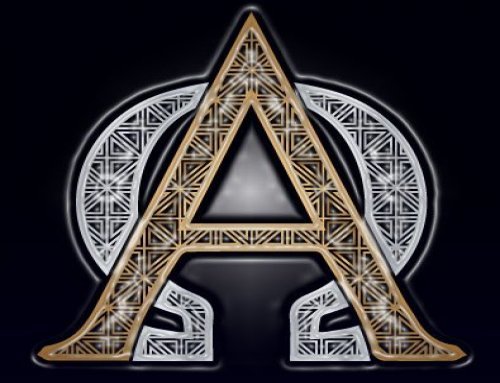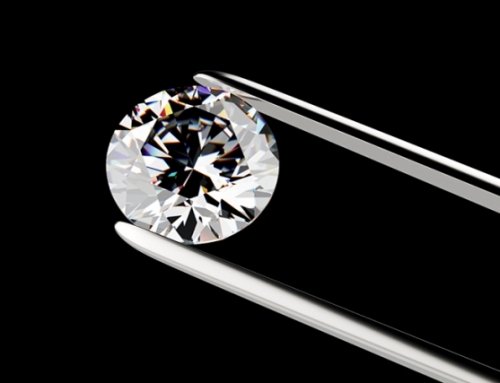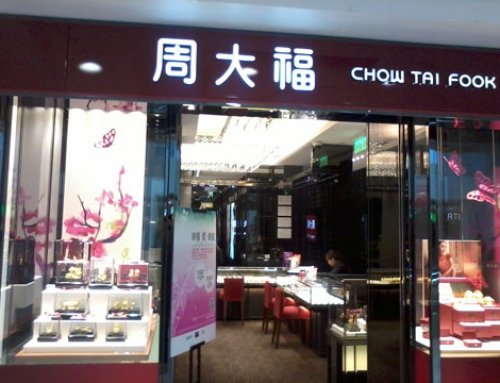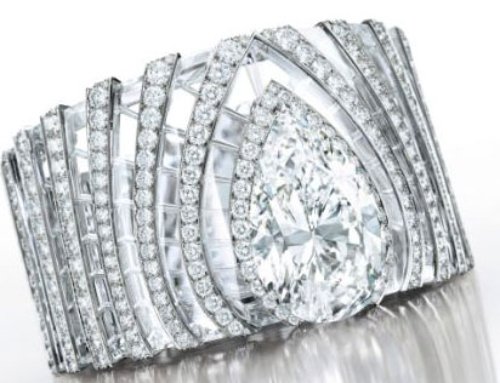Forecasting trends is equal parts science and art — you need to be widely aware of key happenings in your industry, and discerning enough to know which ones will be most influential. Below are 12 trends affecting jewelry in 2018 that you need to know about now.
Trends in manufacturing, retail and design
1. History lessons
History and heritage are wholeheartedly inspiring jewelry designers. From coins to architectural influences, artisans are letting the past inspire future heirlooms. Themes of protection include evil eyes and Latin verses, while medieval artifacts and cameos recall sacred symbols and signs of lifestyles long ago. Brooches — an ancient ornament and cyclical fashion favorite — are back this season as well, having taken up residence on spring 2018 couture runways.
This revival offers “a thread of continuity, when designers look to history for inspiration and then put their own spin on the styles,” says Marion Fasel, founder and editorial director of jewelry website TheAdventurine.com. Nikos Koulis’s Art Deco numbers and Arman Sarkisyan’s 19th-century vibe are prime examples. Also important: David Webb, whose jewels Fasel calls “a wonderful way to time travel.”
2. Online sales for independents
For independent jewelers, beyond any of the specific trends, the retail landscape for sales is beyond tough. Between online competitors like Neiman Marcus and designers selling directly to the consumer, many mom-and-pop operations struggle to compete. That’s where an e-commerce-enabled website can help level the playing field. The competition is already selling online, so why aren’t small-scale merchants?
A 2016 report by research firm Forrester predicted online sales increasing by at least 34% to more than $500 billion by 2020. So having an e-store makes a business more relevant to the growing population of shoppers who rely on the internet to research purchases before buying.
“It is harder to offer a good product at a fair price and believe that you can compete with the convenience, value and accessibility of a reputable online purchase,” observes luxury consultant Andrea Hansen.
3. Accessible colored diamonds
It’s time for jewelers to embrace what the high-end design community knows is true: abundant non-white natural hues of diamonds are pretty and should be promoted. Browns, rustic colors and included stones account for the majority of natural colored diamonds, and while many artisans successfully sell them, independent store owners still eschew them like a landscape artist avoids portraits.
“Jewelers have inherited a lot of prejudices, but it’s time to be free of negative attitudes about certain colors,” says Alan Bronstein, president of the Natural Color Diamond Association — a group known for members that sell rare hues like red. A good way to introduce consumers to the market, he suggests, is to say, “Here are the rare colors and here are the other ones, and oh — look at how beautiful they are!”
4. Full-circle style
The simple circle is constantly being reinvented, and this season is no exception when we consider trends you need to take into account. The debut of Spinelli Kilcoin multi-band ring sets a few years ago sparked a newfound love for more geometrically inspired styles, and a mushrooming affinity for inherently round pearls fits naturally into this circular revolution. Some disco-ball themes have appeared in the mix — such as Carelle at the 2017 Couture Jewelry show — and an ongoing love affair with unconventional hoop earrings, including sideways-facing and small huggie-esque numbers, continues to thrive. Now is the time for loop-de-loops, hoops and everlasting links, which are proving as eternal as the sanctity of wedding bands.
5. Creating experiences
An experience is what many merchants strive to provide for clients, but since the tired trunk show model frequently disappoints, a number of retailers and brands are literally thinking outside the store. Retailers like Trish Roberson of Roberson’s Fine Jewelry in Little Rock, Arkansas, shuttles clients all over the US to meet artists, while Cathy Calhoun of Calhoun Jewelers in Royersford, Pennsylvania, hosts an annual Oscars party for clients at a theater near her store.
“It’s about differentiation and staying relevant — creating memories, the human touch, emotional engagement,” says Hansen. Professionalism matters, too, given that 64% of respondents to a recent Jewelers of America (JA) study consulted a jewelry-store expert before making a purchase.
6. Layered up
Layering is a look that endures, and it’s not just for necklaces. Sure, long layers of chains and multi-piece styles are an instant hit, but so are mix-and-match earrings that adorn multiple lobe holes and create compelling stories that trail up the ear. Stacks of bracelets and rings, too, build bigger effects on wrists and fingers, and are an easy way to guide annual gifting traditions. Plus, layering is a retailer’s way of getting customers to spend more in an increasingly casual culture that calls for less pricey accessories.
Caryl Capeci, president of Hearts On Fire, is already declaring 2018 “the year of layering” because of the versatility factor. For proof, she points to holiday sales, which at press time were looking up thanks to stackables.
7. Transparency in sourcing
Transparency has changed from a convenient buzzword to a four-syllable rallying cry in jewelry, especially among millennials. These consumers and reluctant jewelry collectors demand it, and tend to take greater interest in products and businesses that show transparent practices. That’s why they like lab-grown diamonds — for the perceived good they do the earth, since they’re not a product of mining. This is also why Chopard promotes its Fairmined gold: It’s good PR and good for business.
At mining company Greenland Ruby, responsible best practices are mandatory and part of its license. “Modern and industrialized colored-gemstone mining operations are set up to track and trace material from mine to market,” says Hayley Henning, vice president of sales and marketing for the company.
Trends in business and fashion — and why the industry should care
8. Social responsibility
Social responsibility is the overarching mantra that makes transparent sourcing a reality. Socially responsible moves include using ethically acquired gold and gemstones that ensure fair wages and safe working conditions.
“We can be socially responsible and change communities in a positive way simply by conducting our business in an aware and fair fashion,” notes Susan Wheeler Geraghty, owner of Susan Wheeler Designs. Geraghty, who is on the board of the Ethical Metalsmiths, also founded The Chicago Responsible Jewelry Conference and is involved with the Jewelry Industry Summit.
Why you should care: The heartwarming tales of success resulting from these practices can be game-changers for store sales once consumers — particularly millennials — grasp their meaning. Jewelers can speed up the process by sharing the tales until they hit viral status.
9. Estate jewelry
Often, the best values in jewelry are in estate cases. That’s because many of the best-quality gems were mined long ago, and as is typical of natural resources, they’ve dwindled with time. Plus, have you noticed the number of firms popping up (Circa and Del Gatto, among others) that specialize in buying and reselling fine and rare gems, while others purchase jewels for investment through companies like Arcot Finance?
Why you should care: Jewelers who deal in estate goods can bank on better margins and quality merchandise, provided they have the know-how (read: gemology degree) to assess pieces themselves. And acquisitions can sit securely in a safe collecting interest, just like money in the bank, until you’re ready to sell.
10. Casual styles prevail
The ongoing phenomenon of athleisure paves the way for casual trends in jewelry. Who needs a massive rivière when your daily wardrobe consists of yoga pants?
“As a society, our wardrobes are more casual, and we want jewelry that can take us from day to evening,” says Amanda Gizzi, director of PR and events for JA.
Why you should care: Casual jewels are lighter and ideal for layering — and as noted before, one way to compensate for selling less-expensive jewelry is to get customers to buy more individual items: stacking rings and bracelets, tiers of necklaces in varying lengths, and trails of earrings up each lobe. Ensure sales associates are mix-masters themselves in-store so they can effectively merchandise items by wearing them.
11. Connecting with consumers
Manufacturers have long worked under the radar, selling their pieces to retail clients that then market them as their own. Now, however, in today’s look-at-me-on-social-media era, it’s fashionable to self-promote to help drive traffic to stores. It’s also a complete 180 for many makers, and a move that calls for fast and furious outreach to consumers directly.
Why you should care: Money and sales. How will jewelry shoppers know about brands and designers if said entities are not making noise to attract attention? From a single artisan working at a bench to a big-name jewelry house, connecting directly with consumers helps drive awareness, traffic and revenue.
12. Courting women
It’s not a new idea, nor the most surprising of the 2018 trends, but it’s one that store owners often seem to forget: Women are the primary wearers of jewelry and are buying more of it themselves, even though industry advertising still largely appeals to the men who gift it. Recent marketing from De Beers aims to alter this course, with CEO Bruce Cleaver telling the media this past fall that the company wanted to “give even deeper meaning to the diamonds Why you should care: Understanding how to sell to women (look to lifestyle stores for tips) will help boost jewelry sales.
